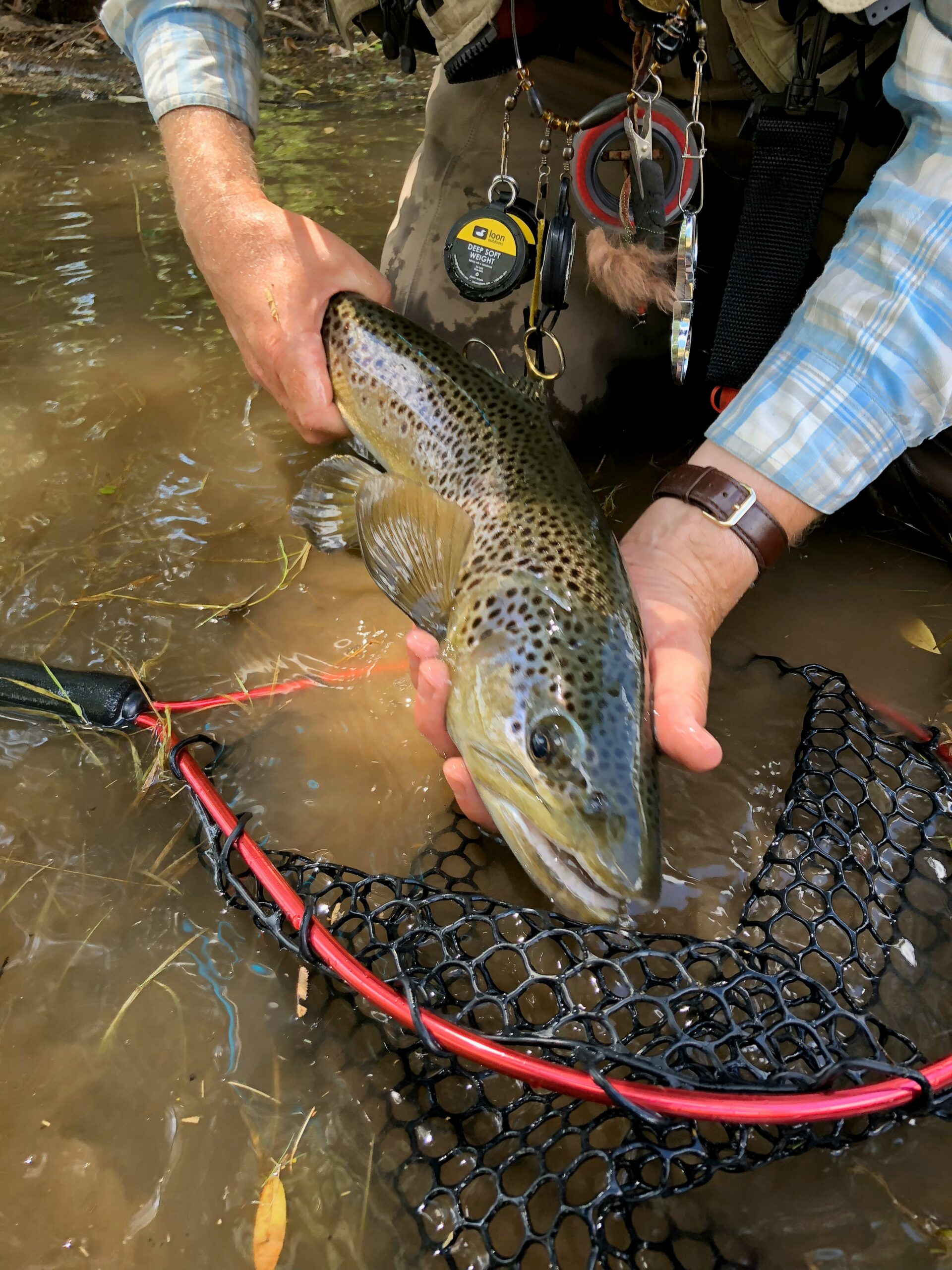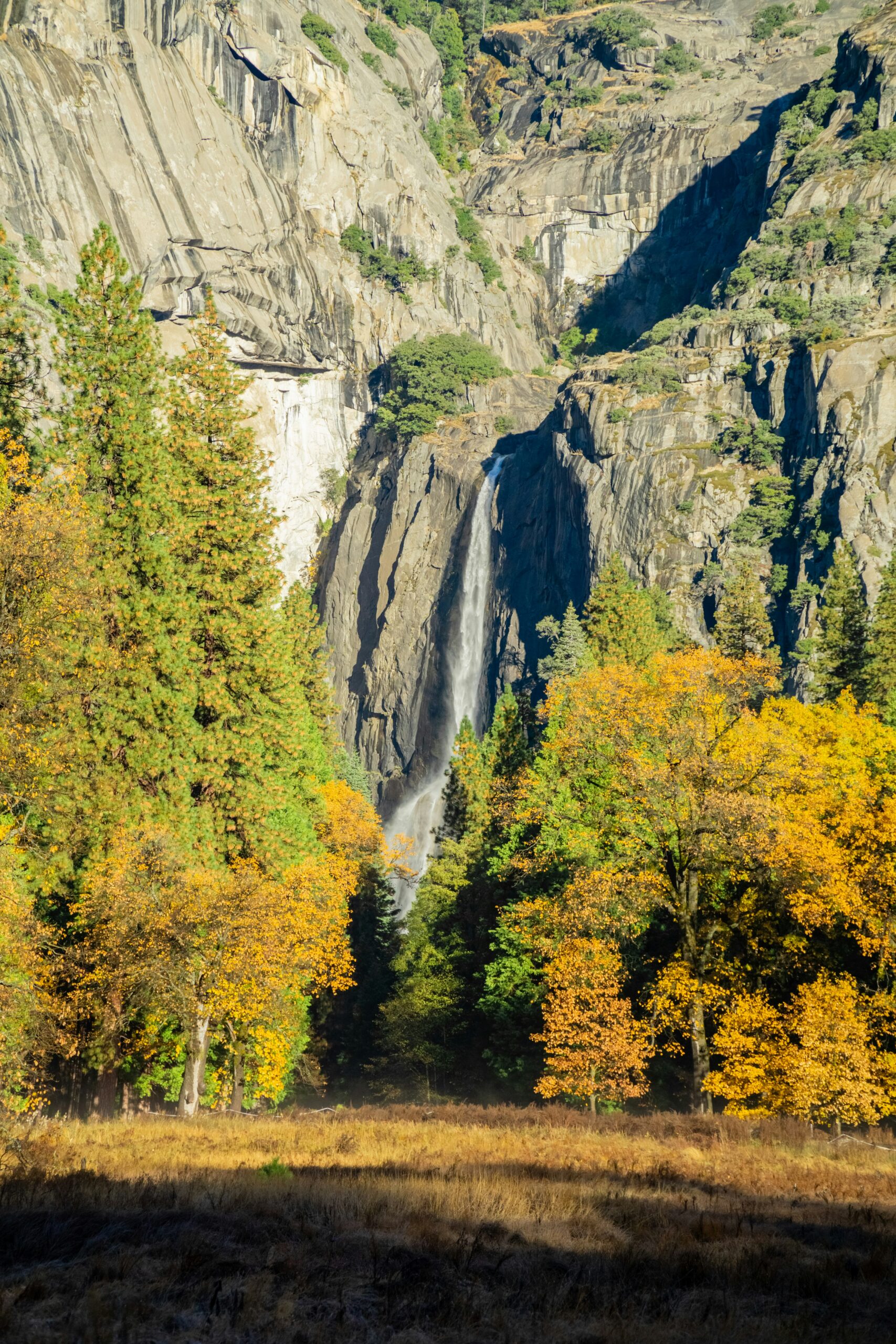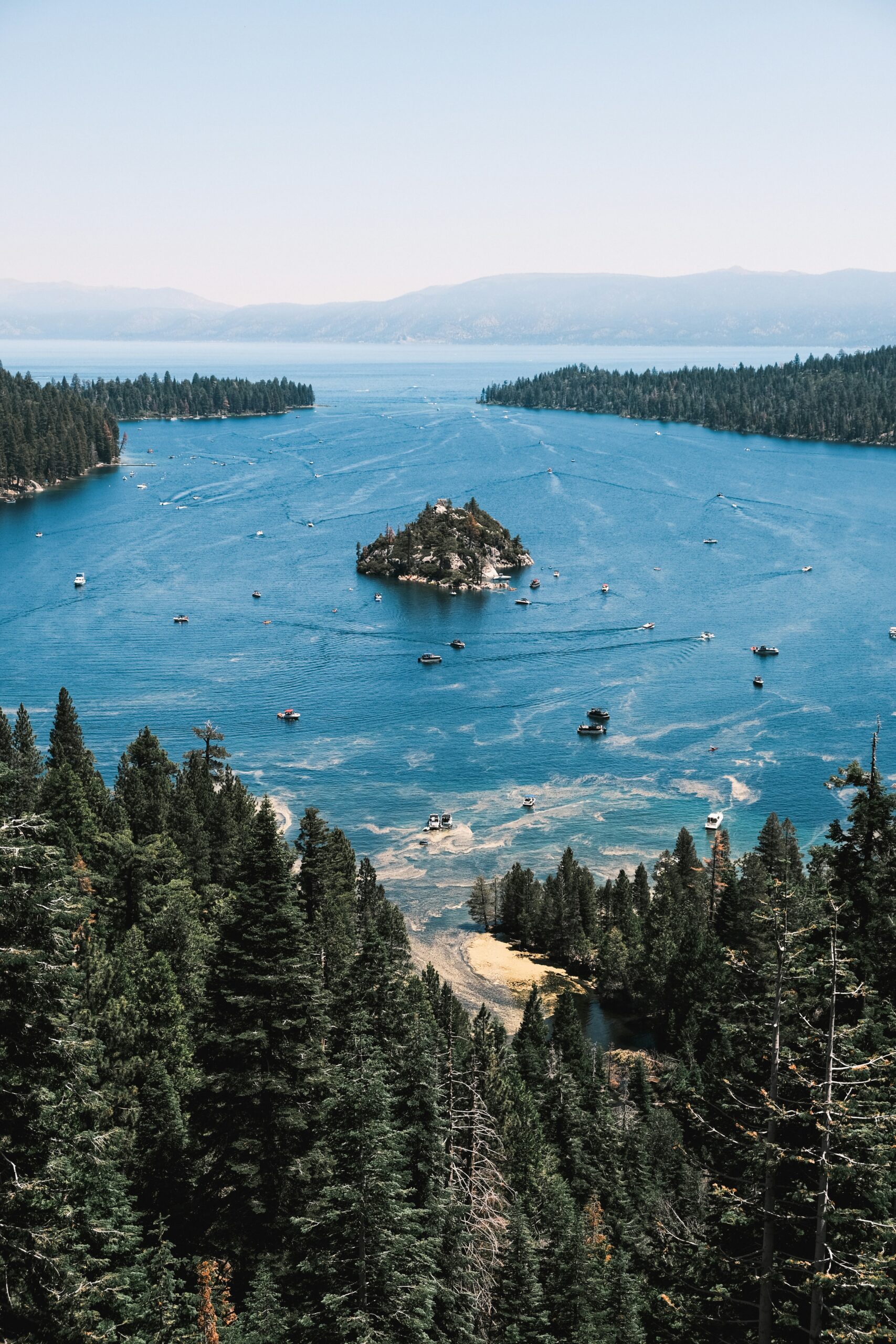Aurora Borealis California: Rare Sighting Delights West Coast Skywatchers
Have you ever dreamed of witnessing the breathtaking Aurora Borealis without traveling to the far north? You might be surprised to learn that this natural wonder can sometimes be visible right here in California!
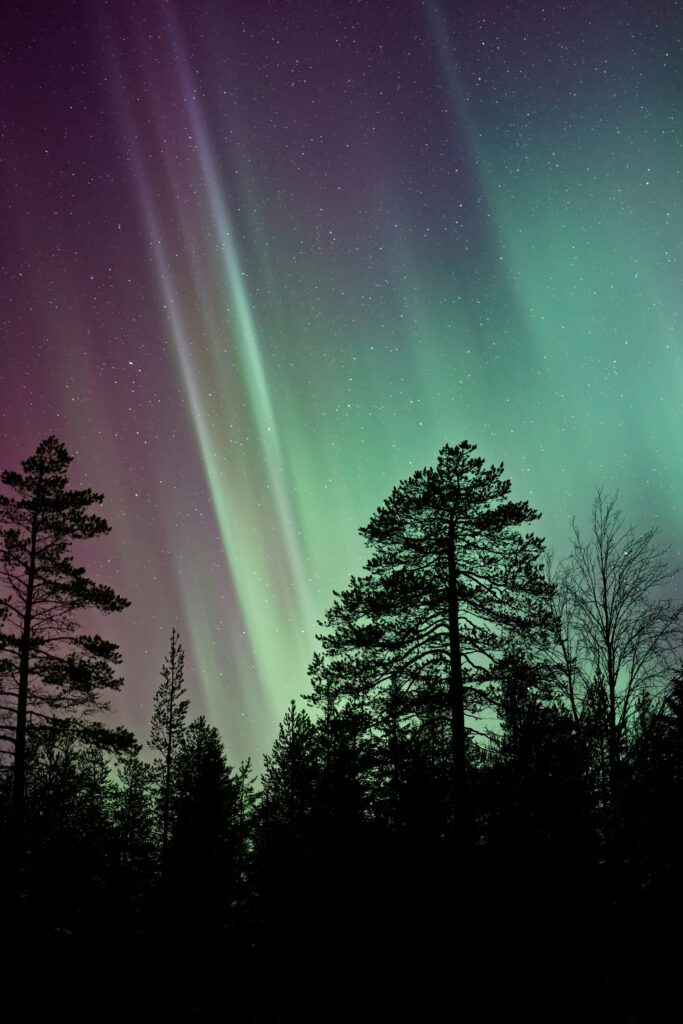
The Aurora Borealis, also known as the Northern Lights, is a mesmerizing display of colorful lights dancing across the night sky. While typically seen in high-latitude regions, rare and intense solar storms can make the Aurora Borealis visible in California. These celestial light shows occur when charged particles from the sun collide with gases in Earth's atmosphere, creating a stunning spectacle.
You can check the Aurora Dashboard to stay updated on current conditions and potential viewing opportunities. Keep an eye on the Kp index, solar wind speed, and other space weather indicators to increase your chances of catching this elusive phenomenon in the Golden State. Remember, patience and a bit of luck are key when it comes to spotting the Northern Lights in California!
Aurora Borealis California: Rare Sighting Delights West Coast Skywatchers
Understanding Auroras
Auroras are captivating light displays that dance across the sky. They result from complex interactions between the Sun and Earth's magnetic field. Let's explore the nature of these ethereal lights and what creates them.
Nature of the Aurora
Auroras occur when charged particles from the Sun collide with gases in Earth's atmosphere. These collisions cause the gases to glow, creating the mesmerizing curtains of light you see in the night sky.
The colors you observe depend on which atmospheric gases are involved:
- Green: most common, from oxygen at lower altitudes
- Red: rarer, from oxygen at higher altitudes
- Blue and purple: from nitrogen
Auroras typically form in oval-shaped regions around Earth's magnetic poles. This is why they're often called the “Northern Lights” or “Southern Lights.”
Auroral Ingredients
To create an aurora, you need three key ingredients:
- Solar wind: A stream of charged particles ejected from the Sun
- Earth's magnetic field: Acts as a shield, guiding solar particles
- Earth's atmosphere: Provides gases for the particles to interact with
Solar storms can intensify auroras. During these events, the Sun releases more particles, potentially making auroras visible at lower latitudes.
Your chances of seeing an aurora increase during periods of high solar activity. The Sun goes through 11-year cycles of activity, with peaks offering more auroral opportunities.
The Phenomenon in California
The Aurora Borealis, or Northern Lights, occasionally graces California's night sky. You might be surprised to learn that this celestial spectacle can be seen in the Golden State under certain conditions.
Frequency of Aurora Borealis
Aurora sightings in California are rare but not impossible. They typically occur during periods of intense solar activity.
You can expect to see the Northern Lights in California once every few years. The most recent notable event was in May 2024, when lucky viewers in Northern California witnessed the colorful display.
Solar cycles play a crucial role in determining visibility. During solar maximums, which occur approximately every 11 years, your chances of seeing the aurora increase significantly.
Best Viewing Locations
Northern California offers the best opportunities for aurora viewing. You'll want to head to areas with minimal light pollution and clear views of the northern horizon.
Some prime locations include:
- Mount Shasta
- Lassen Volcanic National Park
- Lake Tahoe
In exceptional cases, the aurora might be visible from as far south as the Bay Area. However, this is extremely rare and requires ideal conditions.
For the best experience:
- Choose a dark, clear night
- Look north
- Be patient and give your eyes time to adjust
While Southern California sightings are extremely unlikely, never say never when it comes to the unpredictable nature of the aurora!
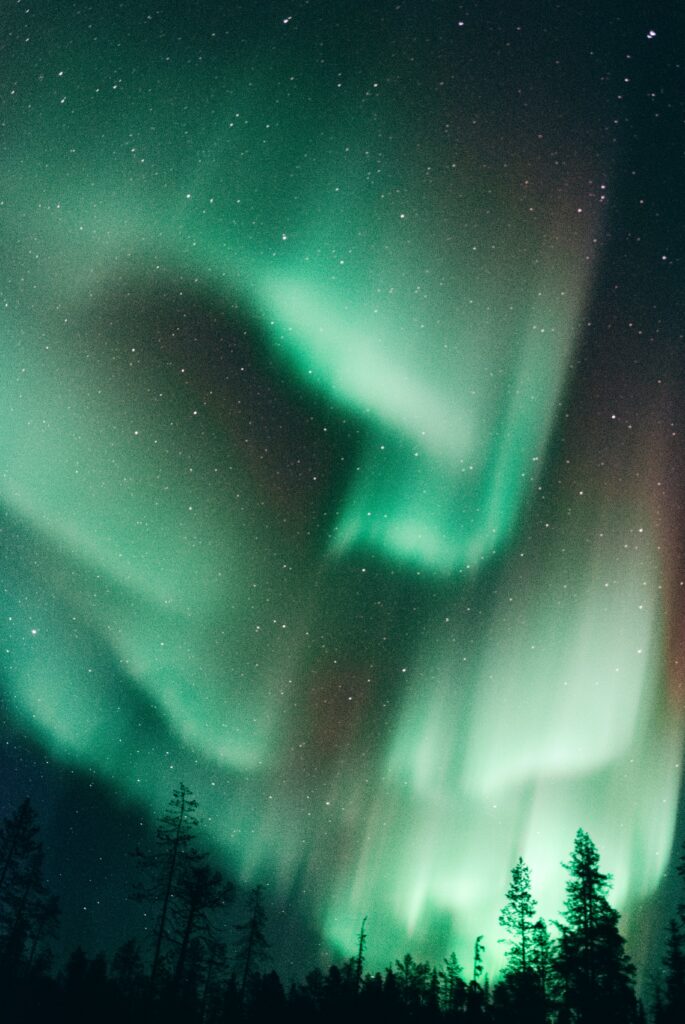
Predicting the Aurora
Forecasting the Northern Lights involves specialized tools and models. You can use these resources to plan your aurora viewing and increase your chances of witnessing this spectacular phenomenon in California.
Tools for Prediction
You can rely on several tools to predict aurora activity. The Aurora Dashboard from NOAA's Space Weather Prediction Center offers valuable insights. This tool provides visibility predictions for tonight and tomorrow night.
Another useful resource is the 30-minute aurora forecast, which gives you a short-term outlook on aurora location and intensity. This forecast is based on real-time solar wind data.
For a longer-term view, check out the 3-day aurora forecast. It provides geomagnetic activity predictions, helping you plan your aurora-watching trips in advance.
Understanding the Ovation Model
The Ovation Model is a key component in aurora predictions. It uses data from solar wind observations to estimate aurora intensity and location.
You'll often see the Kp index mentioned in forecasts. This index ranges from 0 to 9 and indicates geomagnetic activity levels. Higher Kp values mean stronger auroras that may be visible at lower latitudes.
For California, you'll typically need a Kp of 7 or higher to see the aurora. Keep in mind that Kp 1 to 3 usually means faint auroras, while Kp 4 to 6 indicates more active displays.
The Ovation Model also considers factors like solar wind speed and interplanetary magnetic field orientation. These elements help predict the aurora's intensity and visibility at different latitudes.
Solar Cycles and Sunspot Activity
The sun's activity plays a crucial role in creating auroras visible from Earth. Understanding solar cycles and sunspot activity can help you predict when you might catch a glimpse of the Northern Lights, even in unexpected places like California.
Role of Solar Cycles
Solar cycles last about 11 years, during which the sun's magnetic activity fluctuates. At the peak of these cycles, called solar maximum, you're more likely to see auroras. The sun becomes more active, producing more sunspots, solar flares, and coronal mass ejections.
These events can create powerful solar storms that interact with Earth's magnetic field. When this happens, you have a better chance of seeing auroras at lower latitudes.
During solar minimum, the sun is quieter, and auroras are typically only visible closer to the poles.
Monitoring Sunspots
Sunspots are dark, cooler areas on the sun's surface that indicate increased solar activity. By tracking sunspots, you can gauge the likelihood of solar storms and potential aurora sightings.
Scientists use various tools to monitor sunspots:
- Solar telescopes
- Satellite imagery
- Specialized instruments like magnetographs
When large sunspot clusters form, they can produce powerful solar flares. These flares, along with coronal mass ejections, send charged particles towards Earth, potentially creating stunning auroras.
You can check sunspot activity through websites and apps that provide daily updates. This information can help you plan your aurora-watching efforts, even in unexpected locations like California.

Impact of Geomagnetic Storms
Geomagnetic storms can have far-reaching effects on our technological infrastructure. These powerful solar events can disrupt power grids and interfere with navigation systems, potentially impacting your daily life in unexpected ways.
On Power Systems
During a severe geomagnetic storm, your electrical grid may face significant challenges. The storm can induce currents in long conductors like power lines, potentially overloading transformers. This could lead to widespread blackouts in your area.
If you live in regions with older power infrastructure, you might be more vulnerable to these effects. To prepare, consider keeping emergency supplies on hand, including flashlights and battery-powered radios.
Power companies often take preventive measures during such events. They may reduce power flow through vulnerable lines or disconnect certain transformers to protect the grid. While this might cause temporary inconveniences, it helps prevent more serious long-term damage.
On GPS Navigation and Spacecraft Operations
Your GPS devices might act up during a geomagnetic storm. The ionosphere, disturbed by the solar activity, can interfere with GPS signals, reducing accuracy or causing complete loss of service.
If you rely on GPS for navigation, have backup plans ready. Keep physical maps in your vehicle or download offline maps to your smartphone.
Spacecraft operations can also be affected. Satellites may experience communication issues or orbital disturbances. This could impact services you use daily, like satellite TV or weather forecasting.
During severe storms, space agencies might need to adjust satellite orbits or put them in safe modes. While these measures protect the spacecraft, they may temporarily disrupt services you depend on.
Viewing Tips and Safety
Witnessing the Aurora Borealis in California requires careful planning and safety considerations. Here are essential tips to enhance your viewing experience while staying safe.
Best Viewing Practices
To maximize your chances of seeing the Northern Lights in California, choose a location away from city lights. Darkness is crucial for optimal viewing.
Check the aurora forecast regularly. Solar activity predictions can help you plan your outing.
Arrive at your chosen spot well before sunset. This allows your eyes to adjust to the darkness, improving your ability to see faint auroras.
Bring a comfortable chair or blanket. Aurora watching often involves long waits.
Use a red light or cover your flashlight with red cellophane. This preserves your night vision while providing necessary illumination.
Consider using a camera with manual settings to capture the spectacle. Long exposures can reveal colors not visible to the naked eye.
Safety Considerations
When venturing out to view the aurora, always inform someone of your plans and expected return time.
Dress in warm, layered clothing. Nights can be chilly, even in California.
Bring water and snacks. Aurora watching can last for hours.
Ensure your vehicle has enough fuel for the round trip. Remote viewing locations may lack nearby gas stations.
Carry a fully charged phone for emergencies. However, avoid using it while watching, as the screen's brightness can affect your night vision.
Be aware of your surroundings. Use caution when navigating unfamiliar terrain in the dark.
Respect private property and protected areas. Stick to designated viewing spots or public lands.
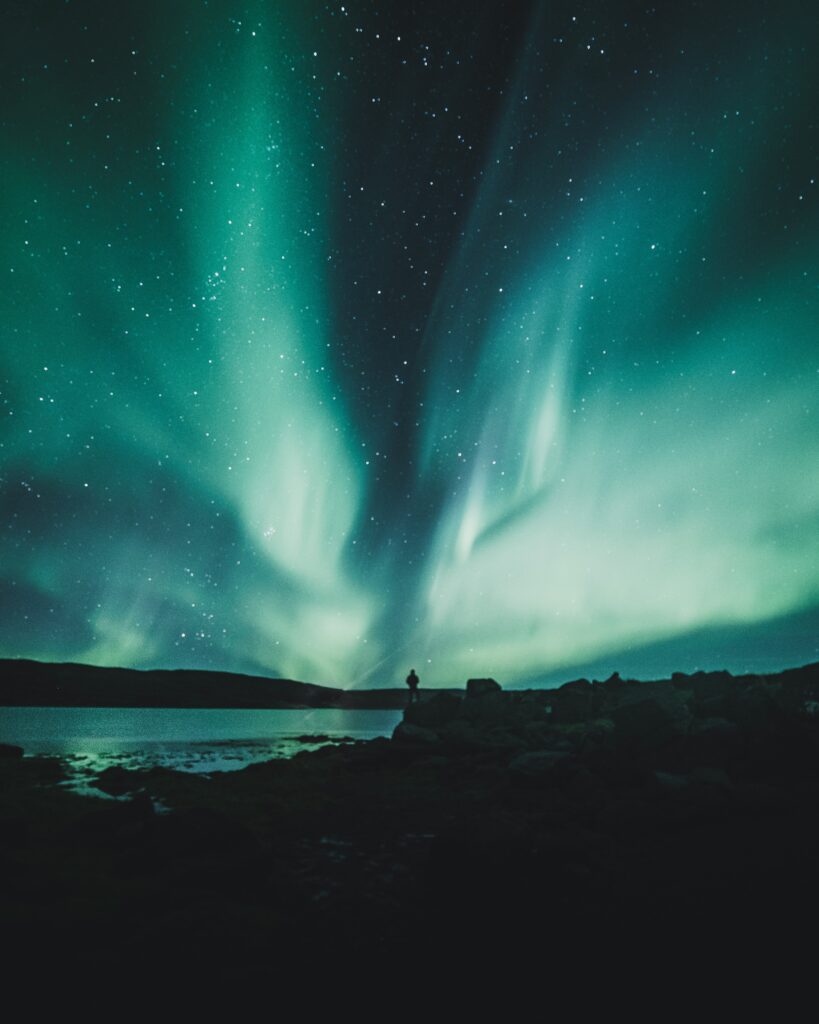
The Science of Colors in Auroras
The mesmerizing hues of auroras result from complex interactions between solar particles and Earth's atmosphere. Different colors appear at various altitudes, creating a stunning celestial display.
Green Aurora Explained
The most common auroral color you'll see is a vivid green. This emerald glow occurs when solar particles collide with oxygen atoms about 60-180 miles above Earth's surface. The oxygen atoms become excited and release energy in the form of green light as they return to their normal state.
Green auroras are often the brightest and most visible to the naked eye. You're most likely to spot this shade even in areas with moderate light pollution. The intensity of the green can vary, sometimes appearing as a faint glow and other times as bright, dancing curtains across the sky.
Variety of Auroral Colors
While green dominates, you might witness a rainbow of other hues in a spectacular aurora display. Red auroras appear at higher altitudes, typically above 180 miles. They're caused by high-altitude oxygen atoms and are less common but breathtaking when visible.
Blue and purple auroras occur lower in the atmosphere, around 60 miles up. These colors result from nitrogen molecules releasing energy after being struck by solar particles. You might see pink or white auroras when red and green lights mix.
The brightness and extent of auroras depend on solar activity. During intense solar storms, you could potentially see auroras as far south as California, offering a rare treat for lower latitude observers.
Auroral Activity and Science
Auroral intensity and NASA's research efforts play crucial roles in understanding the northern lights. You'll discover how scientists measure these dazzling displays and explore NASA's contributions to auroral studies.
Measuring Auroral Intensity
To gauge auroral intensity, scientists use a scale called the Kp index. This 9-point scale helps predict how far south the aurora borealis may be visible. The higher the Kp value, the more intense the auroral activity.
Space weather forecasters also use satellite data to monitor solar wind conditions. These measurements help predict when and where auroras might appear.
You can check auroral forecasts online using tools like NOAA's Aurora Dashboard. This resource provides predictions for aurora visibility in your area.
NASA's Role in Research
NASA plays a vital role in studying auroras through various missions and instruments. The THEMIS mission, for example, uses five satellites to investigate what triggers auroras in the Earth's atmosphere.
You might be interested to know that NASA also studies auroras on other planets. The Juno spacecraft has captured stunning images of Jupiter's auroras, helping scientists compare them to Earth's.
NASA's research contributes to our understanding of space weather and its impacts on Earth. This knowledge is crucial for protecting satellites, power grids, and communication systems from solar storms.
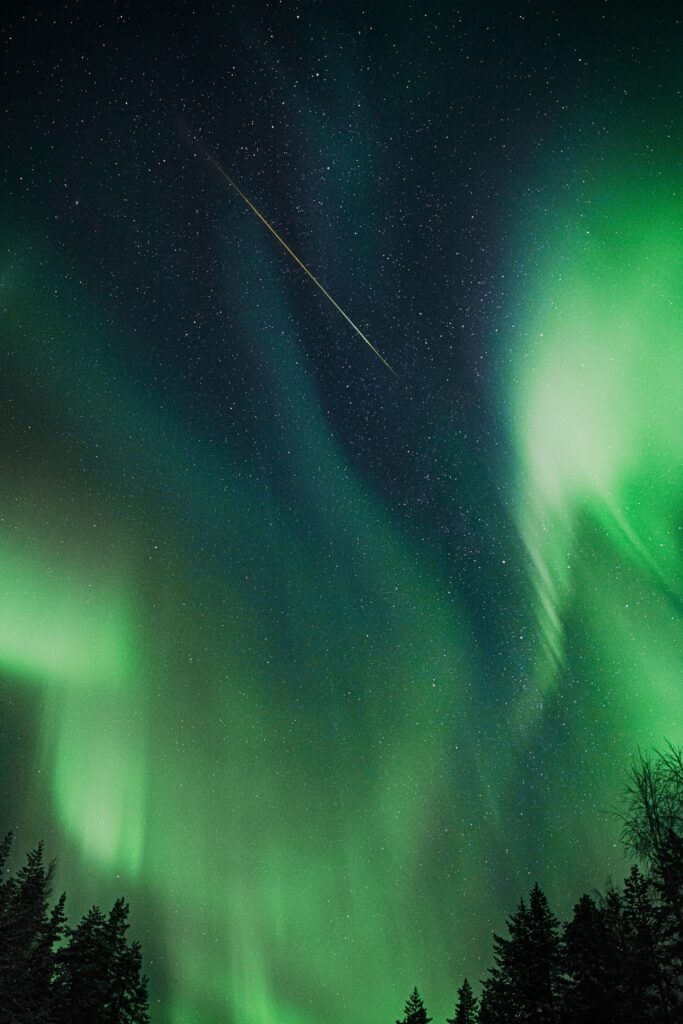
Photographing the Northern Lights
Capturing the Aurora Borealis on camera is an exhilarating experience. You'll need the right equipment and settings to showcase the dancing lights in all their glory.
Tips for Capturing the Lights
Start by finding a dark location away from city lights. Use a sturdy tripod to keep your camera stable during long exposures. A wide-angle lens is ideal for capturing more of the night sky.
Experiment with composition. Include foreground elements like trees or mountains to add depth and scale to your images. This helps viewers appreciate the magnitude of the aurora.
Be patient and prepared. The lights can be unpredictable, so bring warm clothes and snacks. You might need to wait for hours for the perfect shot.
Consider using a remote shutter release or your camera's self-timer to avoid camera shake when pressing the shutter button.
Best Camera Settings
Set your camera to manual mode for full control. Use a high ISO, typically between 3200 and 8000, to capture more light.
Choose a wide aperture, ideally f/2.8 or lower, to let in maximum light. This is crucial for aurora photography.
Shutter speed depends on the aurora's intensity. Start with 15 seconds and adjust as needed. Faster lights may require shorter exposures to avoid blurring.
Focus manually on infinity. Autofocus struggles in low light. Take test shots and check your focus on the camera's LCD screen.
Shoot in RAW format for better post-processing flexibility. This allows you to adjust white balance and recover details later.
Incorporating Auroras in Culture
Auroras have captivated human imagination for centuries, inspiring myths, art, and popular culture. You'll find these celestial phenomena woven into ancient legends and modern entertainment alike.
Auroras in Mythology and Art
Norse mythology linked the aurora borealis to the Valkyries, depicting their armor as the source of the ethereal lights. Indigenous peoples of North America often saw auroras as spirits of their ancestors.
In art, you'll notice auroras frequently portrayed in landscape paintings, particularly by Scandinavian artists. The swirling lights have inspired countless works, from traditional oil paintings to modern digital creations.
Famous pieces include Frederic Edwin Church's “Aurora Borealis” and Harald Sohlberg's “Winter Night in the Mountains.”
Modern Cultural References
Today, you'll encounter auroras in various forms of media. Movies like “The Golden Compass” and “Brother Bear” feature stunning animated depictions of the northern lights.
In literature, you might come across auroras in Philip Pullman's “His Dark Materials” trilogy or in science fiction novels as extraterrestrial phenomena.
Video games often use auroras to create magical atmospheres, as seen in “Skyrim” and “Valheim.” You'll also find aurora-inspired designs in fashion, jewelry, and home decor, bringing the celestial wonder into everyday life.



